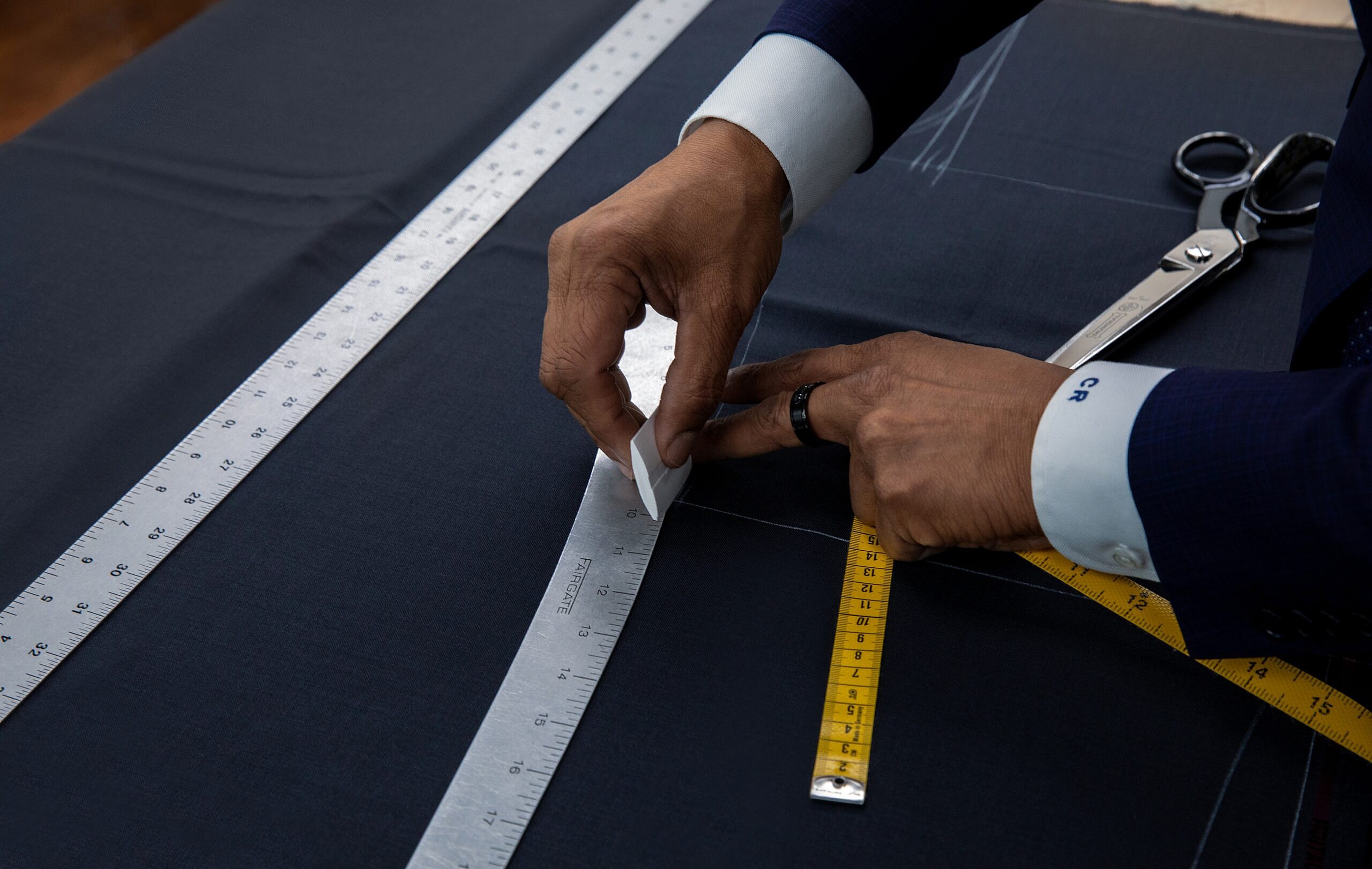Every man should own at least one great suit. That sartorial commandment has been passed down for generations, but many of us have never had a custom suit made, and may wonder what to keep in mind when investing in a bespoke suit or tuxedo. Enter Alan David Custom. The family-run suitmaker has been creating fine American-made suits, tuxes and shirts since 1913. Located on Madison Avenue in midtown Manhattan, the dapper outfitters craft each individual piece with meticulous attention to detail, creating bespoke garments designed to fit flawlessly and enhance your silhouette with elegance and comfort. Here, ten essential suit-buying tips from ADC owner Alan Horowitz and his team of expert stylists.
1. Never Get Measured By Your Salesperson
“Measuring and selling are two completely different skills, so always get measured by a tailor. You wouldn’t let the person giving you a test drive also run your credit score. It’s the same idea here.”
2. Ask For A Basted Fitting
“A basted fitting is what really differentiates a true bespoke from made-to-measure or made-to-order. Without a basted fitting, a suit can’t really be called a full custom. After a client’s measurements have been taken, a unique paper pattern is created. It’s from this pattern that the garment is carefully hand cut, assembled and temporarily hand stitched with white basting thread. At this point, the basted garment is ready for fitting.”
3. Buy From Well-Reviewed Suitmakers With Experience
“Do some research and look at online reviews before making a decision. Track record definitely matters, whether it’s years of experience or praised reviews. “
4. Your Suit Should Both Fit And Flatter You
“A custom garment shouldn’t just be about measurements, it should also enhance your body. Even if a suit technically fits, a trim cut on a heavyset build or a loose cut on a slimmer man won’t be flattering.”
5. Get A Second Pair Of Trousers
“Jackets last much longer than trousers as they wear much quicker. So a second pair of trousers can ensure your suit lasts much longer.”
6. Be Aware Of Button Stance
“If the top button is too high, it can accentuate the belly, and if it’s too low it can tend to look rather old-fashioned and unflattering. It should sit at the fullest part of the stomach.”
7. Sleeve Pitch Matters
“Everyone’s arm position is going to be slightly different so if the sleeve pitch doesn’t match, it’ll cause wrinkles near the bicep. If you’re looking at it from the side view, the sleeve line should fall cleanly from the shoulder to the cuff.”
8. Choose Tuxedo Fabric Wisely
“A tuxedo should never use the same cloth as a basic black suit, so you want to look for barathea weaves or blends with mohair for more structure, drape, and reduced wrinkling. Fabrics with mohair are great for tuxedos, they give a bit of a sheen but really hold the crease very well. But no more than 20% mohair, otherwise it’s too shiny.”
9. Consider Fabric Durability
“Not all fabrics that are good for trousers are also good for jackets. For example, faile cloth lacks body and volume for a jacket, but holds up well to the rigors of the trousers.”
10. Match Your Suit To The Occasion
“Your suit needs to match its purpose—whether it’s work, a wedding, or another special occasion.”
